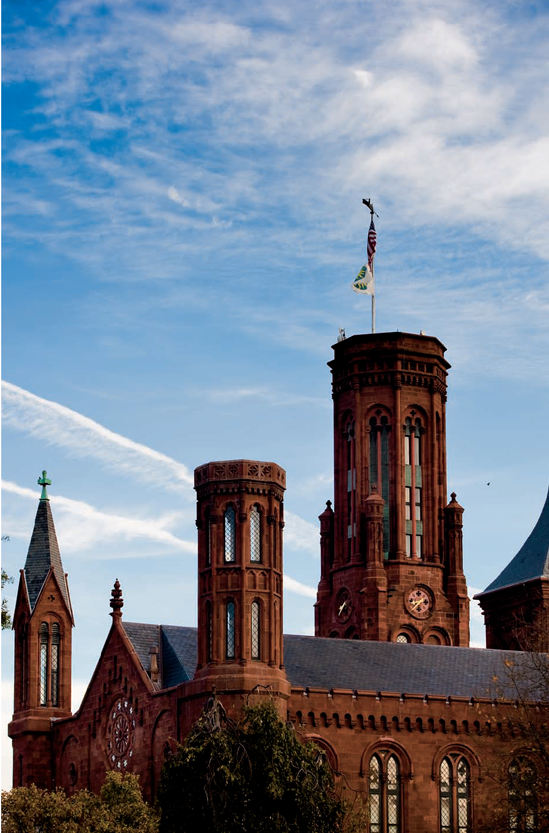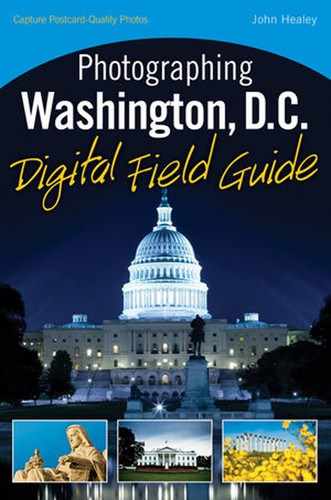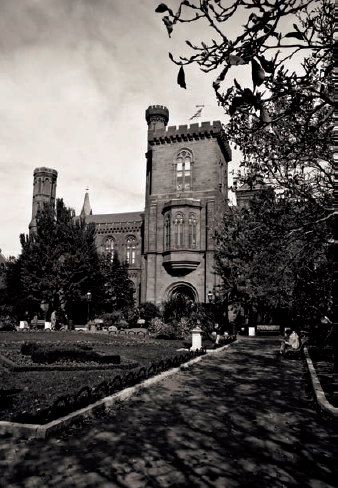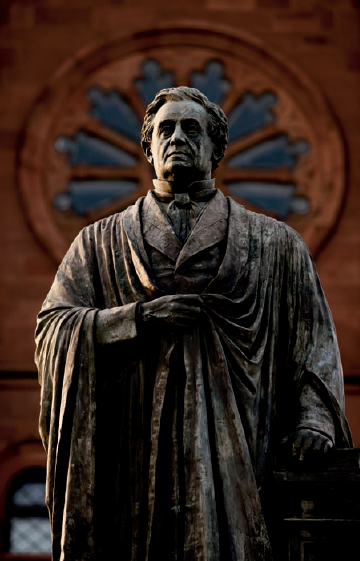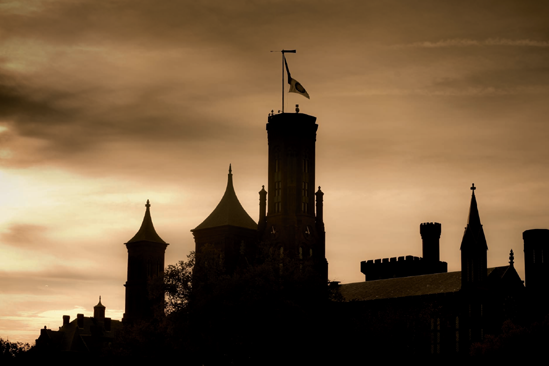
The Smithsonian Institution Castle seen from the National Mall in the morning. Taken at ISO 100, f/8, 1/320 second with a 70mm lens.
A standout even on the National Mall, the Smithsonian Institution Building — known simply as The Castle — was the first building of what is now a research institute and museum campus. Near the building's north entrance is the crypt of James Smithson, the English scientist whose name the Institution bears.
The red sandstone and design of the building makes it particularly photogenic, along with the immaculately tended gardens that surround it.
The Castle has many good angles, as well as much to see within its gardens. It's definitely a rare opportunity to have access to such a unique building.
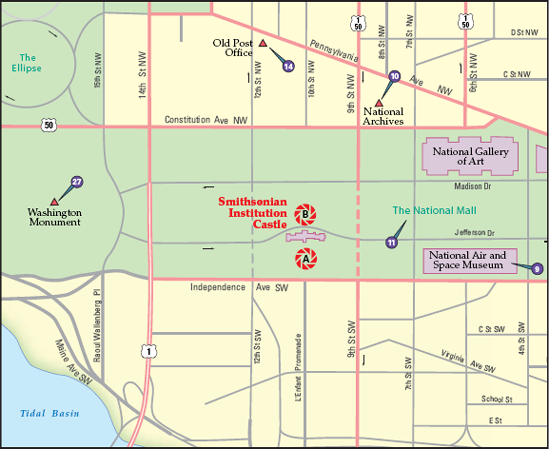
Figure 16.1. The best locations from which to photograph the Smithsonian Institution Castle: (A) the south-side garden and (B) the north side of the castle. Nearby photo ops: (9)National Air and Space Museum, (10) National Archives, (11) National Mall, (14) OldPost Office, and (27) Washington Monument.
A lovely view of a gorgeous building, this is definitely the side to spend your time photographing. The north side of the building is attractive, but this side has no cars, roads, or anything of a modern bent — it retains much of its historic look (see Figure 16.1).
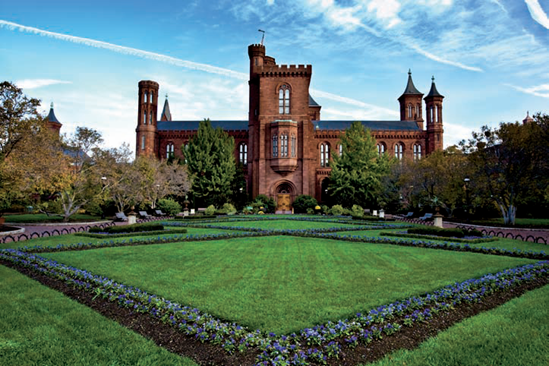
Figure 16.2. The Smithsonian Institution Building seen from its south side (see A on the map). Taken at ISO 400, f/8, 1/50 second with a 25mm lens.
The ruddy Maryland sandstone also is gorgeous when converted to black and white (see Figure 16.2). The vintage look of a sepia-toned black-and-white photograph is a good match for the Norman design of the building.
The front of the Smithsonian Castle is more architecturally imbued, but it also suffers somewhat from its proximity to modern Washington, D.C., life. Tour buses, loads of visitors, and parked cars often crowd this side. However, as mentioned earlier, the sandstone provides a lovely palette for black-and-white photos (see Figure 16.3), and this side is great for getting up close and examining its intricate details (see Figure 16.4).
The gardens here are a nice respite to the busy Mall area. Be sure when photographing the details of the building to focus carefully on what will be the visual interest within the frame (see Figure 16.5).
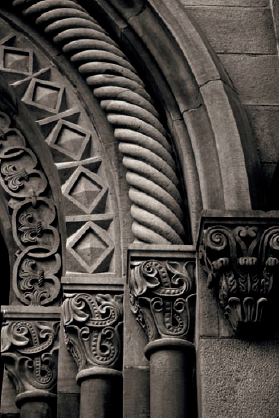
Figure 16.6. The north entrance of the Smithsonian Institution Building (see B on the map). Taken at ISO 320, f/5, 1/160 second with a 65mm lens.
The Smithsonian Building offers many interesting photographic opportunities, whether they are in color or black and white.
Here, essentially standard lenses are the rule: The south side images of the building require somewhat wider lenses, although there is ample room to step back. The wider lenses, when placed closer to the gardens, accentuate the crisscross pattern there.
One of the basic tips of photography is to know what general shade neutral gray is — traditionally what cameras base their exposures on. For the image of the building from its south side, you can lock your camera's exposure on the green grass here, which is usually quite close to neutral gray.
Making such images with a shallow depth of field can be beautiful, but you need to make sure that the focus point of the image makes sense. If you're focused on an element that isn't the focal point of the image, then the disparity of focus becomes immediately obvious.
The gardens will obviously change their look throughout the seasons, but respectable photos can be made all year long.
Because the Castle is a north/south-facing building, the sun arches over it and casts long shadows unless it is an overcast day. Mornings and evenings provide nice light, but don't discount midday either. Sometimes the even illumination of such light, especially on the sandstone, is great looking.
As with other buildings, unique weather can always enhance a photograph. Luckily, you have plenty of places to take cover if the weather turns ugly. For example, there is a coffee shop inside the building, which makes for a perfect, all-weather rest stop.
There are certainly opportunities to shoot late in the evening as well as night, although the sandstone soaks up a large amount of light. But the form of the building is quite graceful as a silhouette.
While here, check out the many beautiful details that adorn the area. Whether it be vibrant flowers or a flowing fountain (see Figure 16.6), you have plenty to see.

Figure 16.7. A fountain on the east side of the Smithsonian Institution Building. Taken at ISO 100, f/2, 1/320 second, with a 50mm lens.
